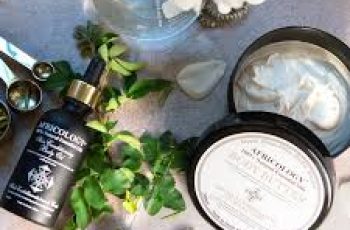Yes, you can use lactic acid on your hands. In fact, incorporating lactic acid into your hand care routine can be an effective way to address common hand issues like rough skin, dark spots, and signs of aging, such as fine lines and wrinkles.
Our hands often show signs of aging before other parts of the body because they are constantly exposed to environmental stressors such as UV rays, pollutants, and frequent washing. Lactic acid, a mild AHA (Alpha Hydroxy Acid), can help rejuvenate the skin on your hands by exfoliating dead skin cells, brightening dark spots, and improving texture.
What Is Lactic Acid and How Does It Work?
Lactic acid is an AHA that is known for its gentle exfoliating properties. It’s derived from sour milk (hence the name “lactic”) or kefir, and is one of the mildest acids in the AHA family.
It works by:
Exfoliating the skin’s surface, helping to remove dead skin cells and debris.
Improving skin texture and helping with signs of aging such as fine lines and wrinkles.
Brightening dark spots and hyperpigmentation, which is common on the hands due to sun exposure.
Moisturizing the skin by drawing moisture from the air and helping to lock it in.
Because lactic acid has a larger molecular size than some other AHAs (like glycolic acid), it works on the surface layer of the skin, making it a gentler option that is less likely to cause irritation.
Benefits of Lactic Acid for the Hands
Lactic acid can address several common skin concerns on the hands:
Exfoliation and Smoother Skin: It can help remove rough patches and dry skin, leaving your hands feeling smoother.
Hyperpigmentation: It can reduce the appearance of age spots, sun spots, and uneven skin tone.
Moisturization: Lactic acid draws moisture into the skin, which is especially important for the hands, as they tend to dry out easily.
Anti-Aging: Lactic acid helps stimulate collagen production, which can improve skin elasticity and firmness, reducing wrinkles and sagging over time.
How to Use Lactic Acid on Your Hands
Night Application: It’s often best to apply lactic acid to your hands at night. This minimizes exposure to environmental aggressors like UV rays and pollution, allowing the acid to work undisturbed.
Patch Test: As with any new skincare product, it’s essential to do a patch test first, especially if you have sensitive skin. Apply a small amount of product on the inside of your forearm, leave it for 24 hours, and check for irritation before applying it to your hands.
Lactic Acid Products: You can find lactic acid in various formulations such as:
Toners and Serums: Apply a thin layer to the hands after cleansing, similar to how you would apply it to your face.
Creams or Lotions: Some hand creams contain lactic acid, which can provide ongoing hydration while gently exfoliating.
Moisturize After Application: Since lactic acid exfoliates and can leave skin dry, always follow up with a nourishing moisturizer to lock in hydration.
Sun Protection: After using lactic acid, your skin may become more sensitive to sunlight. Always apply a hand cream with SPF 30 or higher during the day to protect the skin from UV damage.
Does Lactic Acid Burn the Skin?
Lactic acid is generally considered gentle, but as with any exfoliating acid, it can cause burning, redness, or irritation if not used correctly, especially for sensitive skin.
To minimize the risk of irritation:
Start with a lower concentration of lactic acid and gradually build up.
If you experience any discomfort, rinse off immediately.
If you’re new to chemical exfoliants, start by using the product 2-3 times a week and gradually increase frequency.
Can I Leave Lactic Acid on My Hands Overnight?
Yes, many lactic acid products are designed to be left on the skin overnight, especially in the form of serums or creams. However, it’s important to ensure the product is formulated for overnight use and that your skin is not overly sensitive.
If you’re using a lactic acid peel (which may be more potent than regular creams or serums), it’s generally best to wash it off after 10-15 minutes or follow the specific instructions of the product you’re using.
Can I Use Lactic Acid After a Hand Peel?
If you’ve had a professional chemical peel or a hand scrub, avoid using additional exfoliating acids (like lactic acid) immediately afterward. The skin will be sensitive and vulnerable after such treatments, and further exfoliation could lead to excessive irritation or damage.
Give your skin at least 24 hours to recover before applying any exfoliating acids, and always follow up with hydrating products like hyaluronic acid or moisturizing creams to soothe the skin.
Conclusion: Should You Use Lactic Acid on Your Hands?
Incorporating lactic acid into your hand care routine can offer numerous benefits, including smoother, more youthful-looking skin. However, like any active ingredient, it should be used with care.
Apply it at night to allow it to work undisturbed.
Patch test before use to avoid irritation.
Moisturize after application to prevent dryness.
Always use sunscreen during the day to protect your hands from further sun damage.
If you’re uncertain about which product is right for you or how to incorporate lactic acid into your routine, it’s always a good idea to consult with a dermatologist for personalized advice.
DQH Can I use salicylic acid first and then vitamin C?
It’s easy to create a skincare routine, but knowing how to use it is another thing entirely. In most cases, if you’re not getting the desired skin results, it could be due to the layering of conflicting ingredients. So, is it possible that salicylic acid and vitamin C are such ingredients? Or are these active ingredients the duo that’s been missing from your skincare routine? If you want answers, stick around because today we are going to explain the benefits of salicylic acid and vitamin C and how they can be used in your daily life.
What are the benefits of salicylic acid for skin?
Salicylic acid is one of the most commonly used beta hydroxy acids and is favored by many people with oily, acne-prone skin. This acid is derived from willow bark, and unlike its water-soluble relatives (called alpha-hydroxy acids), salicylic acid is oil-soluble, which means it can penetrate deeper into the lower layers of the skin. Once it reaches the lower layers, it can help unclog pores of excess sebum, dirt, bacteria, debris, and impurities. This results in clearer skin tones and greater definition.
Not only does salicylic acid benefit the underlying layers, but the outer surface of the skin benefits as well. When applied to the skin, salicylic acid removes the buildup of dead skin cells. This is accomplished by breaking the bonds that hold dead cells to the surface. Over time, this can cause the complexion to look dull and prone to acne, blackheads, and other blemishes.
If you’d like to learn more about salicylic acid and how it can improve your skin, check out this dedicated blog post from a beauty insider.
What are the benefits of vitamin C for skin?
Vitamin C is considered one of the most powerful antioxidants, which means it is very effective at fighting free radicals and preventing them from causing further skin damage. Examples of free radicals include pollution, central heating, UV rays and harsh climate. They attack proteins, fats and cell membranes as soon as they come into contact with the skin, causing signs of premature aging such as fine lines and wrinkles as well as hyperpigmentation, flaky patches of skin and loss of elasticity.
Many people usually prefer to use vitamin C in their morning routine as this ingredient gives the complexion a radiant glow. You’ll also find that vitamin C can target areas of hyperpigmentation, plumping the skin and reducing the appearance of fine lines and wrinkles.
The thing about vitamin C is that there are a lot of outdated studies going back to the 1950s that describe vitamin C as an unstable skin component. Thanks to improvements in modern technology, this is no longer the case as all products now contain a stable form of vitamin C.
Visit The Beauty Insider to learn more about vitamin C. So please check out our blog post.
Can I use salicylic acid first and then vitamin C?
Yes, you absolutely can. In fact, it’s thought that using salicylic acid before using vitamin C ensures it penetrates faster and works faster.
This is an efficient way to utilize two power sources, and the reason has to do with pH. For example, the skin’s natural pH is about 4.7, making it slightly acidic. Salicylic acid and vitamin C are also both acidic, and you’ll find that vitamin C is absorbed quickly into the skin. Therefore, using salicylic acid beforehand can increase the acidity of the skin and allow vitamin C to penetrate into the skin faster.
While this is considered an effective way to combine two powerful ingredients, you need to be aware of your skin type and how it reacts to certain active ingredients. Even people with perfect, normal skin can experience skin sensitivity and irritation. Therefore, always consult a doctor or dermatologist before using any new products on your skin.
It’s also important to follow skin application rules. In this case, you need to use the product correctly to ensure you get the best results for your skin. If you’re not sure what I mean, the basic rule for skin is to start with the thinnest consistency and work your way up to the thickest consistency. This prevents a barrier from forming on the surface, preventing other active ingredients from penetrating the skin.
Can I use salicylic acid at night and vitamin C in the morning?
Yes, absolutely, this is considered the most effective way to get returns without any adverse side effects. This is because there is enough time between applications to ensure that the skin’s pH levels return to balance.
You’ll also find that Vitamin C is rich in antioxidants and is perfect for use in the morning to ensure your skin is protected and looking its healthiest. Due to the small size of salicylic acid molecules, it is an acid that is able to reach the deepest parts of the skin. While this is effective at keeping skin clear, it also increases the risk of irritation and photosensitivity. Therefore, many people prefer to use powerful BHAs in their evening routine without exposure to UV rays, pollution, or harsh weather.
Warning: If you avoid using sunscreen every day, none of these ingredients will do what your skin needs. The combination of chemical peels and powerful ingredients increases the risk of further damage to the skin’s surface. Use SPF 50 every day to keep your skin protected and your lipid barrier healthy, even on cloudy days, keeping your skin in top condition.



